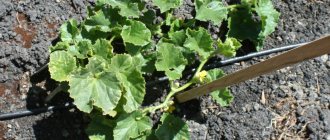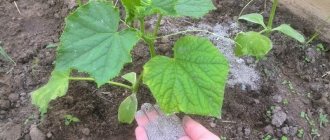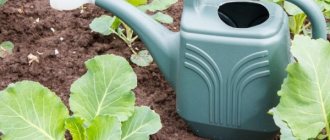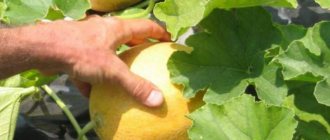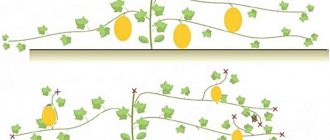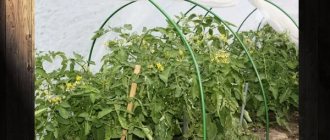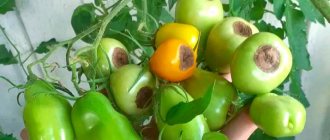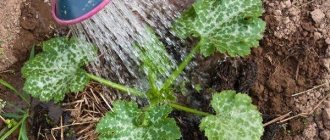The second half of the summer period and the beginning of September is characterized by the appearance and ripening of watermelons. In order for the fruits to grow juicy and sweet, proper care is necessary. One of the procedures is competent and timely feeding of watermelons. The culture accepts organic components well. She also needs potassium, magnesium, calcium, phosphorus, and nitrogen. All needs are satisfied through the application of fertilizers. You should find out what to feed the melon crop and when to do it.
Conventions in the article
- N—nitrogen;
- P—phosphorus;
- K - potassium;
- Mg—magnesium;
- Fe—iron;
- Ca—calcium;
- Mn—manganese;
- B - boron;
- KCl - potassium chloride;
- NH₃ - ammonia;
- K₂SO₄ - potassium sulfate (potassium sulfate);
- (NH₂)₂CO - urea (urea);
- (NH₄)₂SO₄—ammonium sulfate;
- Ca(H₂PO₄)₂—monocalcium phosphate;
- NH₄NO₃ - ammonium nitrate;
- Ca(NO₃)₂—calcium nitrate;
- Mg(NO₃)₂—magnesium nitrate;
- H₃PO₄—phosphoric acid;
- H₃BO₃ - boric acid;
- pH is a pH value that characterizes the concentration of free hydrogen ions in water.
How to Identify Nutrient Deficiencies and What to Do to Correct
Often, by the appearance of the plant, it is possible to determine the deficiency of components, and also to develop a strategy for its elimination.
| Element | Signs of Deficiency | Option for feeding solution (weight of substance per 10 liters of water) |
| N | Growth is inhibited, leaves become lighter. | NH₄NO₃– 30 g |
| P | The lower surface of the foliage is covered with a bluish coating, brown spots may form, the leaves are small. The main leaves of the shoots acquire a bright yellow color. Plants lag behind in development, are characterized by an underdeveloped root system, and the number of ovaries is small. | Superphosphate – 30 g |
| K | The edges of the leaves become brown, and older leaves quickly turn yellow. Plant turgor decreases. The fruits do not reach the ripe stage. | K₂SO₄ – 15 g per 10 l. |
| Fe | The leaves lighten, turn pale, and green veins become visible. | Fe chelate – 10 g |
| Ca | The leaves curl up, the male ovaries dominate, the berries stop developing and fall off. | Ca(NO₃)₂ – 30 g |
| B | The leaves acquire a yellow border, empty flowering is characteristic, the shoots and leaves are deformed, and longitudinal yellow stripes form on the fruits. Possible death of ovaries. | H₃BO₃ – 10 g |
| Mg | Yellowness protruding along the central vein of the leaf. | Mg(NO₃)₂ – 25 g |
Melon crops are sensitive to phosphorus deficiency in the early stages of growth, as well as during the period when fruits begin to form.
Mg is part of the structure of chlorophyll, and Fe and Mn are necessary for its formation. Mn deficiency makes it impossible to absorb nitro compounds. Relative Fe deficiency can develop when the soil is alkalized (pH>7).
B (boron) is part of plant enzyme systems. Its excess is as undesirable as its deficiency. Melons can develop normally only with a constant supply of adequate amounts of microelements (usually in the composition of boric acid).
Signs of a lack of micro and macroelements
It often happens that watermelons do not grow well in the garden. This may be due to a lack of essential nutrients. Thus, a lack of nitrogen can lead to slower growth, the formation of small inflorescences and yellowing of leaves.
If the plant is deficient in phosphorus, the root system will grow poorly, the leaves will begin to shrink and acquire a purple tint. A lack of phosphorus can lead to slow growth and late ovaries.
If the soil contains too little potassium, the fruits will not ripen. Also, if there is a deficiency of this element, watermelons will be defenseless against fungal diseases. If you do not feed the watermelons with potassium during the formation of the ovaries, the ovaries may begin to fall off.
Mineral fertilizers for melons and melons
Depending on the salt content, they are divided into simple and complex (containing one or more components, respectively).
Nitrogen
These are compounds that contain nitrogen, which is necessary for melons and melons during the period of their active growth. They are divided into amide, nitrate and ammonia.
Urea (urea)
(NH₂)₂CO – is characterized by low price and efficiency. Contains nitrogen. Used primarily by spraying.
Ammonium nitrate
NH₄NO₃ – ensures rapid growth of the green part of the plant. The need for the substance increases during the growing season.
Ammonium sulfate
(NH₄)₂SO₄ – contains elements necessary for the life of each plant - nitrogen and sulfur. Characterized by an optimal ratio of useful components. Like other nitrogen fertilizers, it is recommended to use them during intensive growth of melons.
Phosphate
They include a group of products representing various combinations of calcium and ammonium phosphates (superphosphate, ammophos). The need for phosphorus increases during the fruiting period of the plant. The microelement increases the resistance of melons to drought and frost.
Ammophos
Consists of a mixture of mono- and diammonium phosphate. It is a combination of nitrogen and phosphorus. The product is water-soluble and does not cake, which makes it easy to use.
Superphosphate
Used for P deficiency. Contains Ca(H₂PO₄)₂ and H₃PO₄. Necessary for the formation of the root system.
Potash
Potassium-containing fertilizers are among the main ones, along with nitrogen and phosphorus. They influence the formation of the root system.
Potassium chloride
KCl – has a positive effect on root growth, resistance to pathogens, as well as on ovary formation.
Potassium sulfate (potassium sulfate)
Potassium sulfate K₂SO₄ is used as a fertilizer to feed plants. It saturates the soil and crops with potassium. Potassium sulfate is considered one of the best fertilizers, which allows you to accelerate intracellular metabolic processes in plant tissues, prepare them for winter, and also enriches the soil and improves the quality of fruits. It can be used to fertilize melons and watermelons that do not tolerate chlorine.
The effect of fertilizers on growth, development, taste
Watermelons and melons are gourmet foods. Their ripening and sugar content of the pulp depend not only on climatic conditions and proper care, but also on the sufficiency of micro and macroelements in the soil, which are actively absorbed by plants in all phases of development. It is necessary to take feeding seriously at any period of their development.
For the healthy development of roots, stems and leaves of melons and melons, a lot of organic matter is needed, the lack of which will certainly affect:
- growth inhibition;
- yellowing of leaves;
- decreased resistance to infections.
During the formation of flower buds, mineral supplements are required, which contribute to the increase in female flowers and the rapid formation of berry ovaries.
A large amount of minerals is also necessary for early ripening of fruits and increasing their sugar content.
Organic fertilizers
Includes products of animal and plant origin.
Vegetable
This group of fertilizers includes substrates obtained as a result of biological processing or combustion of plant matter.
In plant growing, humus, herbal infusions, vermicompost and wood ash are used.
Humus
This is a layer of soil formed as a result of the processes of decay of plant matter, as well as representatives of fauna (insects, earthworms). Its greatest amount is found in chernozem.
Herbal infusion
“Green” fertilizers are obtained as a result of the fermentation processes of plants, often weeds, in water. They are safe, easily and quickly digestible, repel insect pests, attract earthworms, and alkalize the soil. The following types of infusions are popular:
- rich in nitrogen - based on nettle, clover, quinoa and legumes;
- containing large amounts of potassium and phosphorus - based on comfrey, dandelion and horse sorrel.
Vermicompost
It is a product of processing by earthworms (or red Californian) organic waste, mainly of plant origin (for example, cattle compost).
Wood ash
It is in demand during flowering and ovary formation, as it contains large quantities of phosphorus and potassium. The product is used as part of a solution, which is applied to the green part of the plant by spraying.
Animals
The most common manures include mullein and bird droppings.
Manure
Consists of excrement of representatives of fauna, most often farm animals. Before feeding, it is important to make sure that it is rotten. The use of fresh manure is justified in the second half of September to prepare beds for spring sowing. Approximately 10 kg of fertilizer per 1 m2 is consumed, followed by deep digging.
Bird droppings
Chicken droppings are usually used. The solution is prepared by diluting excrement with water in a ratio of 1:20. After it has been infused for 1.5-2 weeks, it is used for watering. 0.5 liters of the composition are consumed per plant.
Mullein
The rotted substrate is filled with water in a ratio of 1:10 and after a day it is used for its intended purpose.
Mineral complexes
These fertilizers are obtained chemically. They can be simple or complex. The basis is made up of the main elements.
- Nitrogen : urea, ammonium nitrate. Used for weakening plants and discoloration of foliage. Color is restored and new leaves appear, and water consumption by plants is reduced. With the help of ammonium nitrate, saturation with proteins and sugars occurs better.
- Phosphate : ammophosphate, superphosphate. The introduction of this component is mandatory, since its content in the soil is always low. Phosphorus deficiency is determined by the bluish color of the foliage and skinny stems.
- Potash : potassium sulfate (with added sulfur), potassium nitrate (with nitrogen), wood ash. A lack of potassium is indicated by yellowing of the leaves from the root. Metabolism in cells improves. The release of chlorophyll increases.
Do not use fertilizers containing chlorine. It negatively affects the composition of the soil and the taste of the fruit.
There are many different complexes on sale specifically for feeding watermelons and melons, or compositions that include the main micro and macroelements. When using these substances, growth improves and fruiting increases by 25%, sugars increase by 2-3%:
- Crystallon;
- Novofert;
- Master;
- Teraflex et al.
To grow tasty, healthy watermelons and melons with juicy sugar pulp, both complexes are needed.
Do not be afraid of using mineral fertilizers - these are the same natural components, only obtained industrially. The main thing is to follow the dosage.
Feeding with folk remedies
Yeast and a solution of ammonia in water can replace mineral fertilizers.
Yeast
They have a stimulating effect on the growth of the root system and green mass. To prepare the solution, 1 g of yeast mass is dissolved in a liter of water and left for 24 hours. Both spraying and root feeding are used.
Ammonia
Ammonia is a highly concentrated solution of NH3 in water. The product is used when clear signs of nitrogen deficiency appear in melon crops.
Before use, 5 ml of ammonia (the volume of a teaspoon) is dissolved in 1 liter of water. This concentration is considered safe for the plant.
Expert advice
Expert opinion
Kuznetsov Sergey Ivanovich
Expert on melons and melons
- It is recommended to water each bush daily with two liters of water at a temperature of at least +20 °C, regardless of weather conditions.
- Frequent application of nitrogen fertilizers can cause plant burns and disrupt the root system. The use of fertilizers should be carried out according to the instructions.
- To obtain a good harvest, it is recommended to alternate organic and mineral fertilizers.
- Before applying fertilizing, it is necessary to water the beds. It is prohibited to fertilize dry soil.
- Fertilizers should be applied strictly according to the schedule, in compliance with the deadlines, since the needs for nutrients change as the plant grows.
Root and foliar feeding
In relation to melon crops, fertilizers are applied by irrigation and by the root method.
The root variety is the main one and is produced after an abundant supply of moisture to the soil. The depth of soil moisture should not be less than 10 cm.
It is believed that by spraying plants can receive about 40% of the microelements necessary for their growth. The best time for irrigation is morning or evening hours. For better absorption, it is recommended to use low concentration solutions.
Fertilizer application scheme
In mid-spring, after treating the seed material with a KMnO4 solution, sowing is done in pots. The composition of the soil includes 1 part soil and 3 parts humus. It is recommended to add a mixture of mineral fertilizers to the resulting composition in the proportions of phosphorus, potassium and nitrogen (in tablespoons): 3 + 1 + 1.
Immediately before planting seedlings in the soil, it is necessary to add biohumus “Ecomiracle”, after which, after 2 and 4 weeks, apply two more fertilizings.
If the soil lacks microelements, additional fertilizing with mineral salts is used, for which 3-4 g of ZnSO4, CuSO4 and H3BO3 are dissolved in 10 liters of water. You can prepare a nutritious solution for melons by mixing 200 g of wood ash in 10 liters of water.
Among organic products, bird droppings and mullein have proven themselves well. Fertilizing is done twice: after the appearance of 3-4 leaves, as well as the beginning of flowering. For safety reasons, nutrient watering is carried out in moist soil (preferably after rain).
Selection of fertilizers depending on the growth phase
During ontogenesis, the plant's need for certain nutrients and substances changes, which affects the choice of feeding.
For seedlings
Gardeners advise fertilizing seedlings with a composition that contains 2 g of NH₄NO₃, 1.5 g of K₂SO₄ and 4 g of superphosphate per 1 liter of water.
After transplant
After planting in the ground, it is necessary to gradually switch to a plant-nutrient mixture containing 1 g of NH₄NO₃, 2.5-3 g of K₂SO₄ and 3-4 g of superphosphate in 1 liter of water.
During flowering
The product of choice is wood ash, rich in potassium and phosphorus. The solution includes 15 g of substrate dissolved in a liter of water. When preparing, the ash is poured with boiling water and left for 24 hours. Foliar feeding is recommended.
During fruiting
A solution rich in K₂S is used. Potassium has a positive effect on the formation of the ovary.
Do melons need organic matter?
We recommend reading our other articles
- Automatic egg incubator
- Mixer for chickens
- How to prune an apricot in spring
- How often and how to water flowers correctly
If a gardener prefers organic substances to mineral ones, it is worth using them wisely so that the taste of the fruit is not bitter or sour. Feeding melons in the greenhouse is carried out alternating infusions of mullein and herbs. From time to time, you can add wood ash to infusions; it not only has a beneficial effect on the plant and soil, but also has a disinfecting effect.
- Infusions of manure and mullein, as well as beneficial herbs (nettle), contain a lot of useful substances, deoxidize the soil, and destroy harmful substances in it.
- In order for the fruits to gain sweetness, they need to be watered with infusions of wood ash or simply “powdered” the soil near the stem.
It is necessary to water with infusions of wood ash or simply “powder” the soil near the stem - A rich harvest of melons in greenhouses will be ensured by fertilizing the melons twice a season with a solution of manure or chicken droppings. The concentrated infusion of manure is diluted with water in a ratio of 1/5 and only then watering is carried out under the stem.
It is important to note that the organic matter chosen for use must only be of high quality. If there are larvae of parasites or diseases, fungi in the droppings, manure, compost or other substances, the melons may disappear in a matter of days. The reason is that a greenhouse is an ideal place for the rapid development of almost any disease. And the pests like it there too - it’s warm, calm, and there are goodies everywhere!
Feeding watermelons and melons in the greenhouse
When the plants reach a height of 25-30 cm, the first feeding is carried out. Long-acting fertilizers or a mixture of ash and potassium salts are used.
The means of choice is Kemira. 1 tablespoon of the mixture is dissolved in 10 liters of water. The solution is enough for 20 plants.
During the growth period, the frequency of feeding is 2 times a month. Usually, alternating solutions of Zircon and Epin are used. With the beginning of fruit ripening, the frequency is reduced to 1 time per week. The means of choice are “Bud” or “Ovary”.
How to feed watermelons
Fertilizing is of great importance for obtaining a good harvest of watermelons. If you follow the dosage, sequence and timeliness, it is possible to achieve proper plant development and abundant fruiting.
The taste of grown watermelons depends on several factors, including the application of complex fertilizers containing a set of macro- and microelements. The compositions of potassium, magnesium and boron are especially important: their deficiency sharply affects the deterioration of the taste of the berries.
In the greenhouse
Only early-ripening varieties and hybrids, zoned for a specific area, fully ripen in the greenhouse. It is better to purchase seeds from trusted sellers, focusing on the production date.
The fresher the planting material, the faster the seedlings will appear and the plants will begin to develop. It is not advisable to use seeds left over from a purchased watermelon: they are unlikely to sprout and produce a harvest. Sowing for seedlings is carried out in the 2nd decade of April.
Planting technology consists of several stages:
- To check germination, seeds are dipped in a salt solution prepared from 1 tsp. salt for 1 tbsp. water. The floating specimens are empty and are removed.
- The remaining ones are washed with running water and placed in a 1% solution of potassium permanganate for 30 minutes. After this, rinse again.
- Before sowing, to stimulate growth, soak in a solution of Zircon or Epin.
- The soil is prepared in advance: add 1 tbsp to 1 bucket of prepared soil from an equal amount of garden soil and compost. l. urea, 1-2 tbsp. l. superphosphate and 1 tbsp. l. potassium sulfate.
- For each seed, prepare a separate container with a diameter of 10–12 cm, since watermelons are very sensitive to injury during transplantation.
- The seeds are placed at a depth of 0.5–1 cm and covered with film. The optimal temperature for germination is +30°C. Under such conditions, the first shoots appear after 2-3 days. Deviations from the temperature norm are undesirable: at higher temperatures there is a risk that the seeds will germinate later or die, at lower temperatures the sprouts will not develop.
After germination, the room temperature is maintained at +22…+25°C. Watermelons are short-day plants, so when growing seedlings, they maintain a 12-hour daylight period. In this case, flower buds are laid in time and further development of sprouts occurs. In city apartments, the level of illumination is insufficient, so phytolamps are used, and seedlings are sprayed with growth stimulants.
Water the seedlings only with warm, settled water when the top layer of soil dries out. When 3-4 true leaves are formed, weekly fertilizing with complex mineral fertilizers begins.
Important ! When cultivating watermelons in a greenhouse, make sure that its height allows you to grow climbing plants at least 2 m high. Polycarbonate greenhouses are popular among gardeners.
Preparing the soil for planting seedlings begins when the weather becomes warm, up to +20°C during the daytime and at least +5°C at night.
The height of the ridges is 40–45 cm. A week before planting, the top layer of soil is removed, manure, hay, sawdust or wood chips are placed in the resulting trench, and nutritious soil is poured on top. The constructed ridges are spilled with a solution of potassium permanganate for disinfection. If possible, heating pipes with hot water are laid at the base of the ridge. In this case, you will not have to worry about temperature conditions.
For seedlings, prepare holes 10 cm deep with a distance between them of at least 50 cm. The soil in the containers is moistened and the plant with a lump of earth is carefully removed. The seedling is positioned so that the root collar rises above the ground. The soil is watered and immediately mulched with a layer of hay or sawdust.
Important ! The optimal temperature for watermelons in a greenhouse is +26…+30°C, decreasing at night to +18°C; air humidity - 55–60%.
Water the melon crop once every 7–10 days with settled warm water, being careful not to get it on the root collar and leaves. The guideline for moisture is slight wilting of the leaves. When creating drip irrigation, it is easy to maintain optimal air humidity, which is especially important during the formation and growth of fruits. During this period, watering is stopped altogether in order to speed up the process of ripening and accumulation of sugars.
The first feeding of watermelons in the greenhouse is carried out when the height of the plants reaches 25–30 cm. For this, long-acting or traditional fertilizers are used with the obligatory addition of potassium salts or ash. A good option is Kemira, which contains a complex of microelements. 1 tbsp. l. The product is dissolved in 10 liters of warm, settled water and watered at the rate of 0.5 liters per plant. “Kemira” can be replaced with a solution of mullein or urea with the addition of 1 tbsp. wood ash.
Growing watermelons / When to fertilize melons for the first time
During growth, the crop is fertilized once every 2 weeks, during the period of fruit formation and development - once a week. The bushes are sprayed with Zircon or Epin solutions, alternating them. When forming ovaries, watermelons are treated with “Bud” or “Ovary”, otherwise pollination will have to be carried out manually. They do this in the morning, plucking a male flower and applying it to a female one, making several circular movements.
When growing watermelons, trellises are used, tying the plants so that they do not shade each other. The side stems are pinched, since in the northern regions watermelons bear fruit only on the main stem. 3-4 ovaries are left on it, all the rest are removed so that the first fruits have time to ripen.
The central shoot is pinched after 4–6 leaves, the last ovary . This method speeds up the ripening of watermelons, but the fruits become smaller. If the summer is warm, this procedure is not carried out. Each ovary is placed in a polyethylene mesh, which is secured to a trellis, since the lashes may not support the weight of the fruit.
Ripe fruits are removed selectively, focusing on the beginning of the drying of sections of the vine. Store the harvest at a temperature of +12°C (at lower temperatures the berries rot).
In the open ground
To create favorable conditions for growing crops in the garden, select a well-lit, warm place, sheltered from the winds. It is best to place a watermelon ridge in the southern or southeastern part of the site.
The soil is dug up in the fall and 0.5 buckets of rotted manure, 40 g of superphosphate, 25–35 g of ammonium sulfate and 20–25 g of potassium sulfate per 1 m2 are added. In the spring, for every 5 liters of soil, additionally add 100 g of double superphosphate, 50–60 g of dolomite flour, 55 g of potassium sulfate and 55 g of ammonium nitrate. By the time of planting, the soil should be warmed to a depth of 10 cm, and the air temperature should be up to +15°C. This usually happens in the last days of May.
A distance of 1–1.5 m is left between the holes, passages of up to 2 m are made between the rows. Seedlings prepared as for a greenhouse are planted with a clod of earth up to the cotyledon leaves. The soil around is covered with sand to a height of 10 cm. Everything is watered with warm water. Until the seedlings take root and begin to grow, they are covered with film or non-woven material stretched over arcs.
2 weeks after planting, watermelons are fed with solutions of urea, mullein or chicken manure. When the ovaries form, add a mixture of 4 g of calcium chloride, 4 g of ammonium nitrate and 6 g of superphosphate.
Always monitor the level of soil moisture, because when it increases, plants are exposed to various fungal diseases.
Feeding watermelons and melons in open ground
Fertilizers are applied at the root, as well as on the surface of the green part of the plant by spraying. It has been experimentally established that melons and melons are capable of assimilating up to 40% of compounds beneficial to the plant through the green mass.
The main type of feeding is root feeding. Spraying plays a supporting role in cases where it is necessary to urgently influence seedlings.
There are 4 stages of root feeding, which can be supplemented by spraying:
- after 2-3 leaves appear;
- a week and a half after planting in the ground;
- after the formation of buds begins;
- during the flowering and fruiting period.
High concentrations of nutrients can damage the root system. In this regard, the soil should be moistened the day before for preventive purposes. Approximately 24 hours before applying fertilizers, abundant watering is carried out, during which moisture should penetrate into the soil at least 10-12 cm.
During the flowering period
During the flowering phase, watermelon plants begin to consume more nutrition, and timely feeding is very important during this period. Preference should be given to potassium fertilizers, without which flowering will not occur on a massive scale.
At this point you can use:
- Nutrivant Plus (2 kg per 200 liters of water);
- Kelik Potassium (half a liter per 100 liters of water);
- magnesium nitrate (2 kg per 200 liters of water).
It is important to replenish the deficiency of magnesium in a timely manner, otherwise unhealthy spots will appear on the leaves, followed by the death of leaf tissue in them. With a lack of magnesium, fruit set is also poor.
Watermelon plants do not tolerate hot and windy weather, in which they become deficient in calcium. This problem can be solved by adding drugs such as:
- Calcinite (800 g per 100 liters of water);
- Speedfol Amino Flowering and Fruiting (200 ml per 200 liters of water).
What fertilizers increase fruits?
Wood ash has proven itself best. Fertilizer based on it not only favors the growth of fruits, but also improves their taste.
Gardeners offer two recipes for preparing the solution:
- 200 g of ash + 10 l of water + infusion for 7 days;
- 1000 g of ash + 10 liters of water + 15-minute boiling.
For preventive purposes, it is recommended to dilute the resulting solution 10 times before fertilizing.
